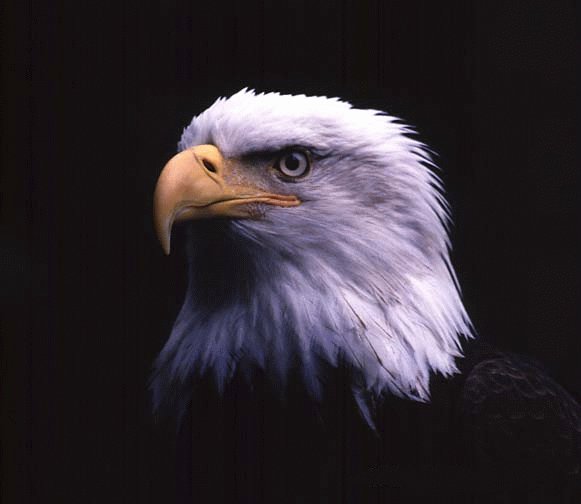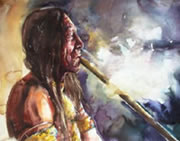Its important for students to learn about different religions in the world because it increases you knowledge of other religious and cultural backgrounds. You also learn how to respect other religions and races, no stereotypes or racial remarks. But in my opinion it doesn't matter to me I learned about different types of religions, everyones the same religion or not, all religions are corrupted in there own ways, and policiatly religions can screw up a country or countries!!
Thats my opinion in the importances of students learning about different religions, to learn its good sides, and its fails.
Monday, May 31, 2010
Reflection
Posted by Stefan Goldscshmid at 1:06 PM 0 comments
Symbols of Aboriginal Spirituality
DREAMCATCHER
It hung over someones bed to filter bad dreams through the web and dissipate it into the Universe.

EAGLE
Eagle is connected both to the spirit of the Great Mystery and to the Earth. Eagle is a powerful symbol of courage.
PIPES
There are different kinds of pipes and different uses for them. There are personal pipes, family pipes as well as pipes for large ceremonies. When the pipe was presented to the circle and then smoked, it was a symbol of the 'Straight Truth' that went directly to Great Mystery.
JOINING THE PIPE- Before joining the pipe, the stem and bowl are laid on a ceremonial blanket or held in the left and right hands respectively.
HOLDING THE PIPE- The bowl of the pipe is held in the left hand (closest to the heart). The bowl is cradled gently in the open palm. The stem is held near the top generally with an overhand grip when a pipe ceremony leader is praying in public, and in an underhand, palm up, grip for private ceremony.
LOADING THE PIPE- Native tobacco is normally used, and each pinch that is inserted into the bowl means something. The reason tobacco is used is because its roots go deeply into the earth, and its smoke rises high into the heavens carrying prayers. The tobacco represents both the seen and unseen worlds, and the connections that every living being within these two realms have as a huge and cohesive group. For example, the flying, crawling, swimming beings; four and two-leggeds; Mother Earths blood (water), air, fire, earth, star nation, planets, Ancestors, Stone and Tree families, and on and on. They all meet inside the bowl in a peaceful dance.
LIGHTING THE PIPE- The pipe should generally be lit with a wooden match or taper for it represents the fire of Creation meeting its children.
SMOKING THE PIPE- The pipe in the right hand should switch from an overhand to an underhand grip almost as if you are sipping water from the heel of the palm. The smoke is drawn down the stem and not inhaled. The smoke for a moment merges with the breath and at that moment, the sacred and the profane become one; it is then gently released into the air as a whole being and the smoke carries prayers and intentions to original Creator. When you have finished smoking, the right hand should return to an overhand grip and the pipe should be passed clockwise to the next person.
PASSING THE PIPE- The pipe is nearly always passed in a clockwise direction representing the travel of the sun. The pipe is passed with an overhand grip on the stem and a careful cradling of the bowl. The pipe is received with two open, upward palms, and then the bowl is cradled in the left hand while the right hand closes over the stem in an overhand grip.
POSTING THE PIPE- This means the pipe is set on an altar which could be a buffalo skull, 2 forked sticks, rock or ceremonial blanket. During the time the pipe is posted the conversation should remain spiritual.
BREAKING THE PIPE- When the pipe ceremony is finished the pipe is taken apart by holding the bowl in the left hand and stem in the right. The ashes are returned to the earth and blessed. The stem is turned away from your body one quarter turn then pulled straight out of the bowl. When not in use, the two parts are usually stored separately.

http://www.shannonthunderbird.com/symbols_and_meanings.htm
Posted by Stefan Goldscshmid at 1:05 PM 0 comments
Holidays and Festivals
The Morning Dance-
Takes place every spring by the Ojibwa of southern Ontario. It is also known as the Wabeno. All fast and cleanse themselves before, then a male elder plays a drum and leads the dance in a clearing around the selected tree. They dance deom sawn to noon. As each dancer passes the tree, the drummer signals the dancer to touch the trunk to give thanks. Around midday, a huge feast of meat and fish is served
The Sun Dance-
This is a summer festival that takes place in the Great Plains. It lasts a period of eight to sixteen days. The circle is an important symbol and acknowledges and respects the sun as the giver of life. Participants dance for a long time around a central cottonwood pole, or "tree of the universe". Dancers embed sharp wooden hooks deep into their chest, then connect the skewers to leather thongs that trail from the top of the cottonwood pole.As they dance around, they pull back on the thongs and tear their flesh. They preform this ritual because they believe that the bosy is the only thing they control and can offer as a sacrifice to the Creator. During the Sun Dance, prayers are said for all peoples and vows are made to the Great Spirit.
Posted by Stefan Goldscshmid at 1:05 PM 0 comments
Rituals
Ceremony:
All of Aboriginals ceremonies take place in a circle. The circle reflects 2 things, the pathway of the sun and the movement of the so called 'All Power'. In a circle there is a powerful life-force that is with them. The drum is at the centre that makes a sound that moves in the circle and touches everyone there and beyond. The singers make the second circle as their voice moves in a circular a motion. The dancers dance in the third circle following the pathway of the sun. The prayer people, the ones who bring offerings of tobacco, are the fourth circle. The druming, the singing, and the dancers are for the people that pray in this fourth circle. The circle beyond the ceremony includes the people that are being prayed for, that the drum and the song reaches them and brings them strength and healing. The ancestors or spirits that here there prayers are the sixth circle. As we pray they take our prayers on to the Creator.
The Feast:
The purpose of the feast ceremony is to honour thier ancestors. They gather in a circle to take up the pipe and give prayer. They offer tobacco and food to give.
The Naming Ceremony:
The first name of the infant is called "Infant Name", this might change when they become a young adult. The name they are given is there spirit name and when addressing the spirit world. Certain members of the community have the 'gift of naming'. They may dream of the name or have vision before this person is even born. These names come from the ancestors and are given to the child who is the gifted by the spirit of that name. When a child becomes a young man or young women, they are given a second name, the name becomes their spirit name forever in time. The new name will soon replace thier Infant Name. This is the name that is used in prayer and ceremony and is recognized by your spirit during the prayers and ceremonys.
The Fast:
The fast is an individual ceremony to pray for harmony with all relations and to strengthen spiritual connectedness. An Elder guides people in their fast through ceremony. Fasting goes on without food and water for 4 days.
http://wblrd.sk.ca/~abspirit_dev/worldview.htm
Posted by Stefan Goldscshmid at 12:40 PM 0 comments
Wednesday, May 19, 2010
The Basics of Aboriginal Spirituality.

Aboriginal Artwork
Posted by Stefan Goldscshmid at 10:30 AM 0 comments

